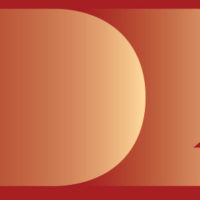
You must be a member of ACAMS to see this content. Please login or join today for full access to www.ACAMSToday.org and other exclusive member-only content.
Diversity. Equity. Inclusion. Although you may have seen these three words more and more over the last year, it is important not to gloss over their meanings too quickly. After decades of activism promoting fairer treatment for all and a year of civil unrest still behind us, it is not a stretch to say that we could use a little unity.
But how are these three goals, also known as DEI, achieved in the workplace? How committed are financial institutions when it comes to creating a work environment based on merit rather than demography? What role can DEI play for anti-financial crime (AFC) compliance practitioners?
As we often do at ACAMS when looking for answers, we turned first to our members and asked what, if anything, had changed when it comes to promoting diversity in compliance departments, and what more needs to be done. What we heard: DEI is not just branding, it is a commitment for the long term and for the right reasons.
“From a compliance perspective, the financial sector is becoming more diverse at varying levels globally, but remains lacking at senior management levels,” said Howard Fields, a senior vice president for Mastercard. “The fintech space appears to be leading in bringing on more diverse senior management across the DEI areas.”
For most compliance roles, however, diversity is a bigger consideration than ever.
Howard Fields
DEI is not just branding, it is a commitment for the long term and for the right reasons
The industry’s view of DEI has been “on a continuum,” with diversity initiatives in the 1990s largely serving as a safeguard against potential litigation and then, in the early 2000s, as “more of a branding effort,” according to Samar Pratt, a managing director with the financial consultancy Exiger Ltd.
Samar Pratt
The passage of related legislation, coupled with the more recent actions by civil rights, have helped executives in the financial sector understand that they must take DEI seriously not only because it is the right thing to do, but also because it can drive a firm’s competitive edge.
“Fundamentally, a cross-cultural AFC team is one that comes prepared with a wealth of ideas and experiences that can be turned into practical applications for their institution’s risk management goals,” according to Fields, who heads Mastercard’s AML, Trade Sanctions and Export Controls Compliance Group.
“I could not imagine running my compliance team without a deeply diverse staff with global experiences,” said Fields. “My team has been able to identify suspicious activity based on their understanding of cultural behavioral patterns.”
It turns out that having staff members who understand a variety of viewpoints on customer behavior across multiple jurisdictions can be a sharp tool in a compliance officer’s toolkit.
“Let’s not forget that criminal networks work cross-border in a vast array of countries,” said Pratt, who leads the firm’s financial crime compliance advisory practice in London. “If financial crime professionals have a better awareness of different cultures and norms outside of their own, it’s going to help them to understand what is abnormal and spot red flags they may have otherwise missed.”
Now an executive general manager for National Australia Bank, Sharon Campbell can recall a time when being a woman in the banking industry meant getting stuck in a junior position while her male peers moved up quickly to manage bank branches.
Sharon Campbell
Today, things are different—in no small part to the fact that “senior leadership is now definitely taking accountability for the [DEI] agenda, both collectively and individually,” she said.
However, the process of implementing a strong DEI culture is not simple. One of the first places to start is with training, specifically unconscious bias training, which attempts to help people understand how their words and actions can inadvertently make others feel excluded because of a lack of context. In other words, without understanding the fuller context, you can say or do something hurtful to one of your work peers.
“It doesn’t matter how much we individually and collectively try to be diverse in thoughts and actions. We all naturally have our own ingrained biases,” said Campbell. “That’s okay as long as we acknowledge what these are and try to ensure that decisions that might lean to these biases maybe take you a bit longer to work through in order to understand the unintentional consequences.”
Unconscious biases are “a thing and everyone has them, even me,” said Pratt. “The key is to accept it and then challenge yourself by increasing your awareness of how this can shape decision making.”
For compliance teams that are thinking about enhancing their DEI policies and procedures, it is important to garner support from others who are willing to lend a helping hand.
“To that end, compliance professionals should seek the full support of their peers as well as of their human resources (HR) department,” according to Pratt. With the sponsorship of a board member and the full support of HR and compliance teams, a DEI initiative will have more clout and resources. “But compliance teams might also consider forming an organization-wide DEI council that is comprised of proponents across various departments and functions,” she said.
“They need to walk the walk and not simply talk the talk,” said Pratt. “Embed diversity and inclusion into the fiber of every decision-making process within the compliance function so that compliance leaders are role models for the rest of the organization.”
For compliance teams that are thinking about enhancing their DEI policies and procedures, it is important to garner support from others who are willing to lend a helping hand
“Importantly, many institutions have made it a practice to consider a more diverse pool of job applicants,” according to Fields, who separately noted that such efforts might be made in coordination with HR.
“Hiring managers should ask HR to present a diverse slate of candidates for open positions at all levels of the organization,” he said. “This does not mean the managers have to hire a diverse candidate, but they should be looking across a diverse spectrum for the right person.”
“Ultimately,” said Campbell, “everyone needs to see diversity, equity and inclusion as their personal problem to solve, whether they are in a leadership role, responsible for hiring or focused solely on compliance.”
Many institutions have made it a practice to consider a more diverse pool of job applicants
“This is more about how we make colleagues feel when in their roles and what opportunities that are made available to them as they develop careers,” she said. “I don’t think it’s an HR issue, although having in place policies such as a good code of conduct and hiring practices can help.”
But building a truly diverse and inclusive team requires more than changing up how applicants are reviewed. It means learning about coworkers the old-fashioned way.
“Communicate, communicate, communicate,” said Campbell. “This has to be about setting expectations, measuring how people are doing and testing how they think things are going. This can be through employee engagement surveys, one-to-one discussions, townhalls, newsletters, intranet articles, or preferably, all of the above.”
Giving employees a safe space to speak freely, encouraging them to speak up without reservation and listening to what they have to say are among the most important steps to ensuring that a DEI program is working properly.
“When issues do arise, team leaders shouldn’t hesitate to engage with staff, including on an emotional level,” said Pratt. Don’t be afraid to be overt with your reactions.
“When employees are represented and included, they feel valued, respected and are more like to perform well and, most importantly, ethically,” she said.
Lashvinder Kaur, VP of global strategic communications and head of diversity, equity and inclusion, ACAMS













